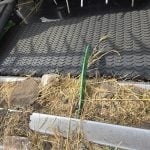ABBOTSFORD, B.C. — Proposed changes to the Agricultural Land Reserve could lead to higher farmland prices and make agricultural operations untenable for younger farmers.
Farmers in the regions affected by the proposals, which include areas in northern B.C. and the Kootenays, say they need to do more than farm on their land to make a living.
However, the argument raises red flags for Jill Robbins, a young poultry producer near Aldergrove who believes commercial businesses should operate in industrial zones.
“Anything other than farming on farmland is a problem,” she said.
Read Also

A power of attorney document may no longer be enough
Recently, some financial institutions have begun imposing their own internal form of “verification” requirement with respect to powers of attorney.
“It’s a bad economic development policy to have businesses competing at two different tax structures in the same community.”
B.C. Young Farmers directors Mark Siemens, 26, and Gurtaj Sandhu, 22, both hope to establish farms near Abbotsford within the next five years.
Siemens became involved with BCYF to protect agriculture in the Fraser Valley for future generations of his family, which operates a 20 acre raspberry orchard and 100,000 laying hen operation.
“I see it as a responsibility I have to ensure the future of agriculture in my region,” he said.
For him, farming offers a good work-life balance.
“I have the physical labour, but my mind is stimulated by the business side, improving the bottom line and adding efficiencies to the farm,” he said.
Siemens likes the idea of protecting farmland but questioned some ALR practices.
“What’s taken out of ALR and what’s swapped in is often less than ideal farmland,” he said.
He is concerned about allowing people to do minimal amounts of farming to obtain farm status for tax purposes and then erect large estates on prime farmland.
“That drives up the prices for people trying to start up,” said Siemens.
Sandhu, who manages his parents’ 30 acre blueberry farm, called the cost of land “ridiculous.”
“Land prices make it hard for a young guy to get up and go start a farm,” he said.
Sandhu is completing a diploma course in horticulture and has off-farm jobs selling horticultural supplies and operating a magazine called Modern Agriculture.
He said it’s hard to compete with large operations in the valley.
“Banks will back you up if you have a good business plan, but the levels they back you up at makes it hard to compete with large commercial guys, so you have to find a niche market,” said Sandhu.
He said leasing land is a viable option, provided the banks offer affordable financing.
“Reasonable interest rates and profit sharing would make it easier to get started,” he said.
Siemens recently returned to the farm and is hoping to buy and expand the farm with his brother in the next five years.
“Coming up with the capital for supply managed (operations) is difficult,” he said.
Land prices as high as $100,000 an acre in the Fraser Valley are another hurdle, he added.
“That’s a huge amount for a young farmer trying to start out,” he said, conceding he is luckier than most because he is part of an established farm.
Other challenges for Siemens’ farm include cross-border shopping and easy access to cheaper products just a short drive away in the United States and a strong animal welfare movement in nearby Vancouver.
“We want to provide the best animal care, but (practices like) free range increases the costs of production,” he said.














